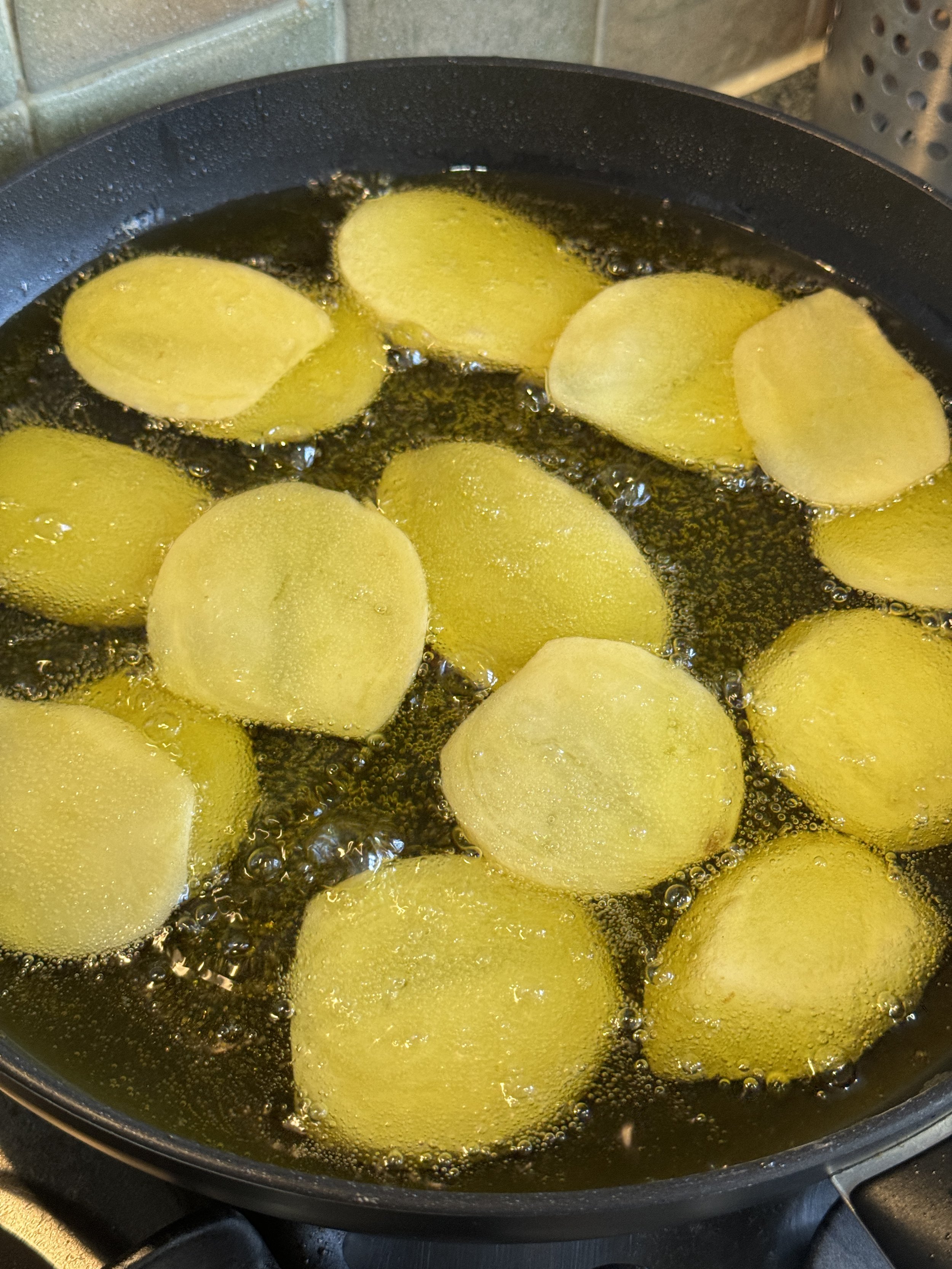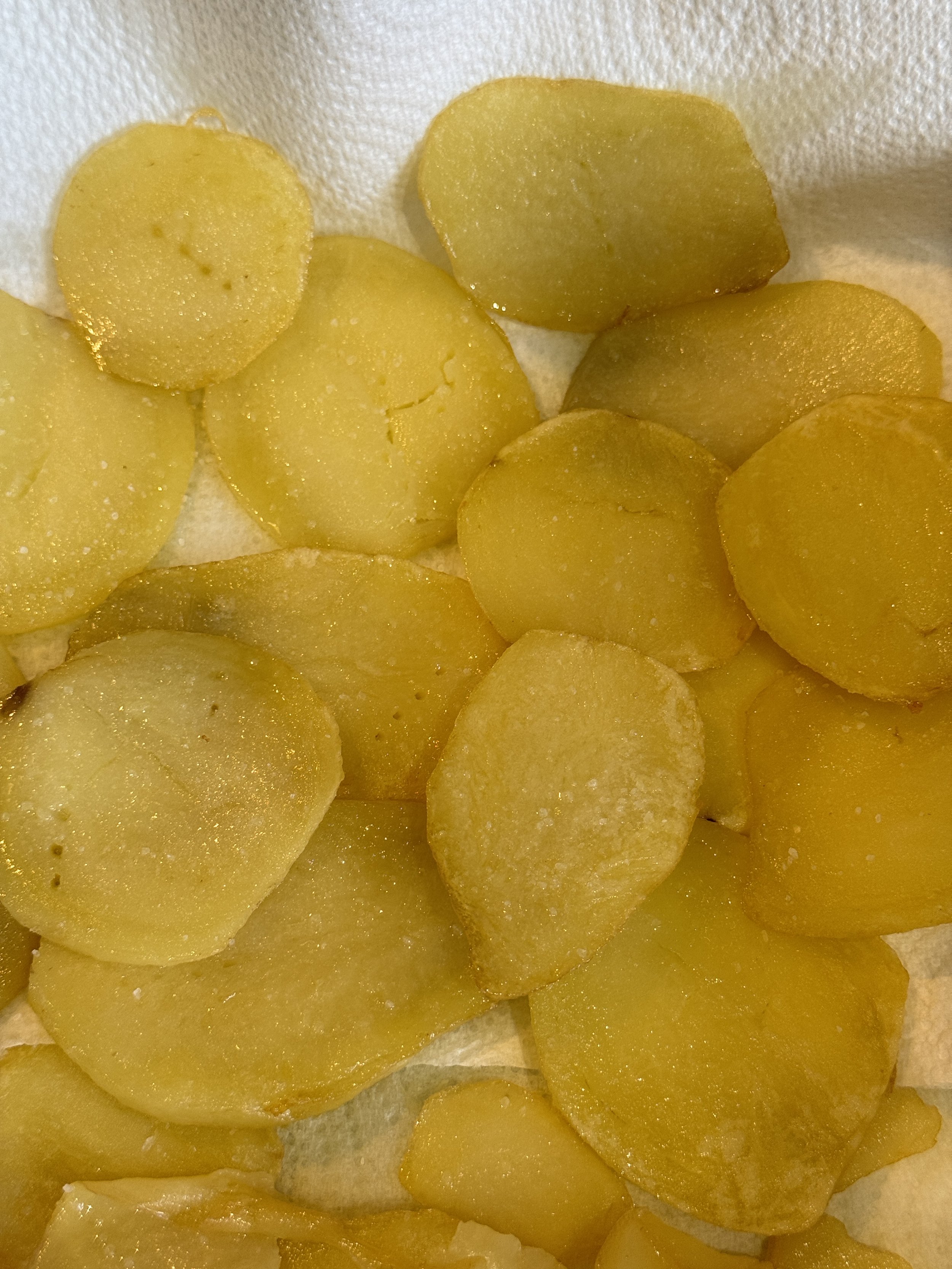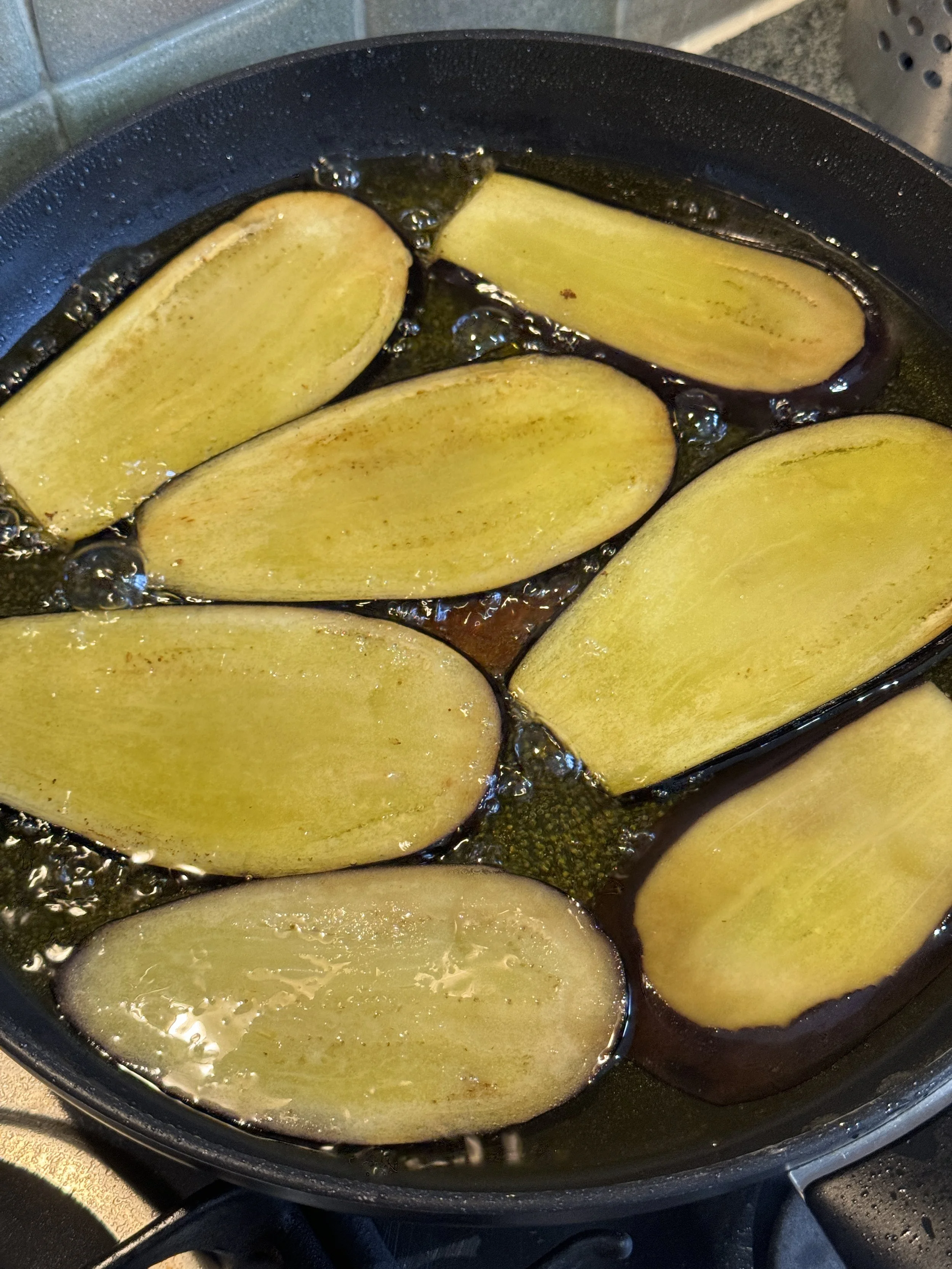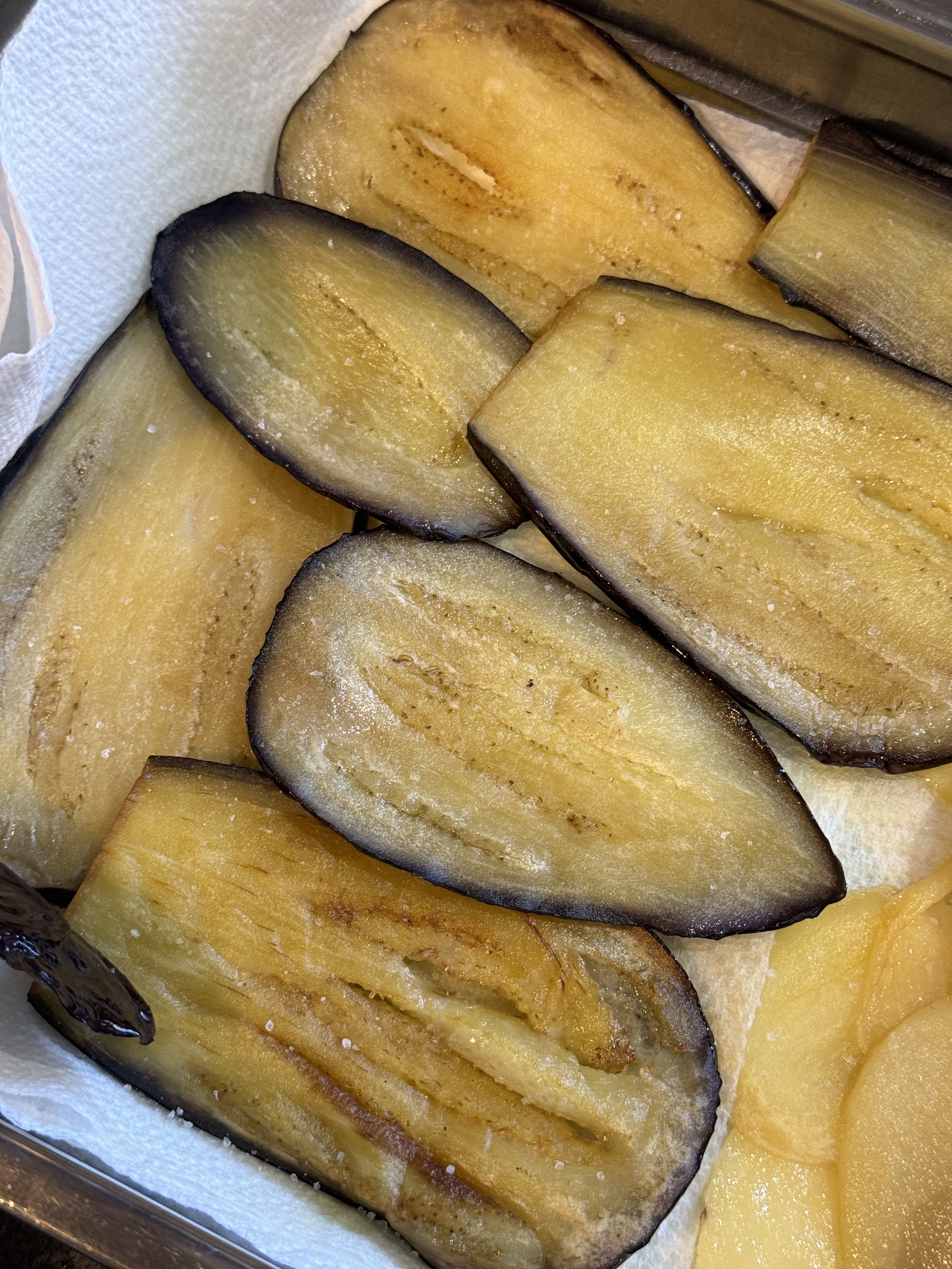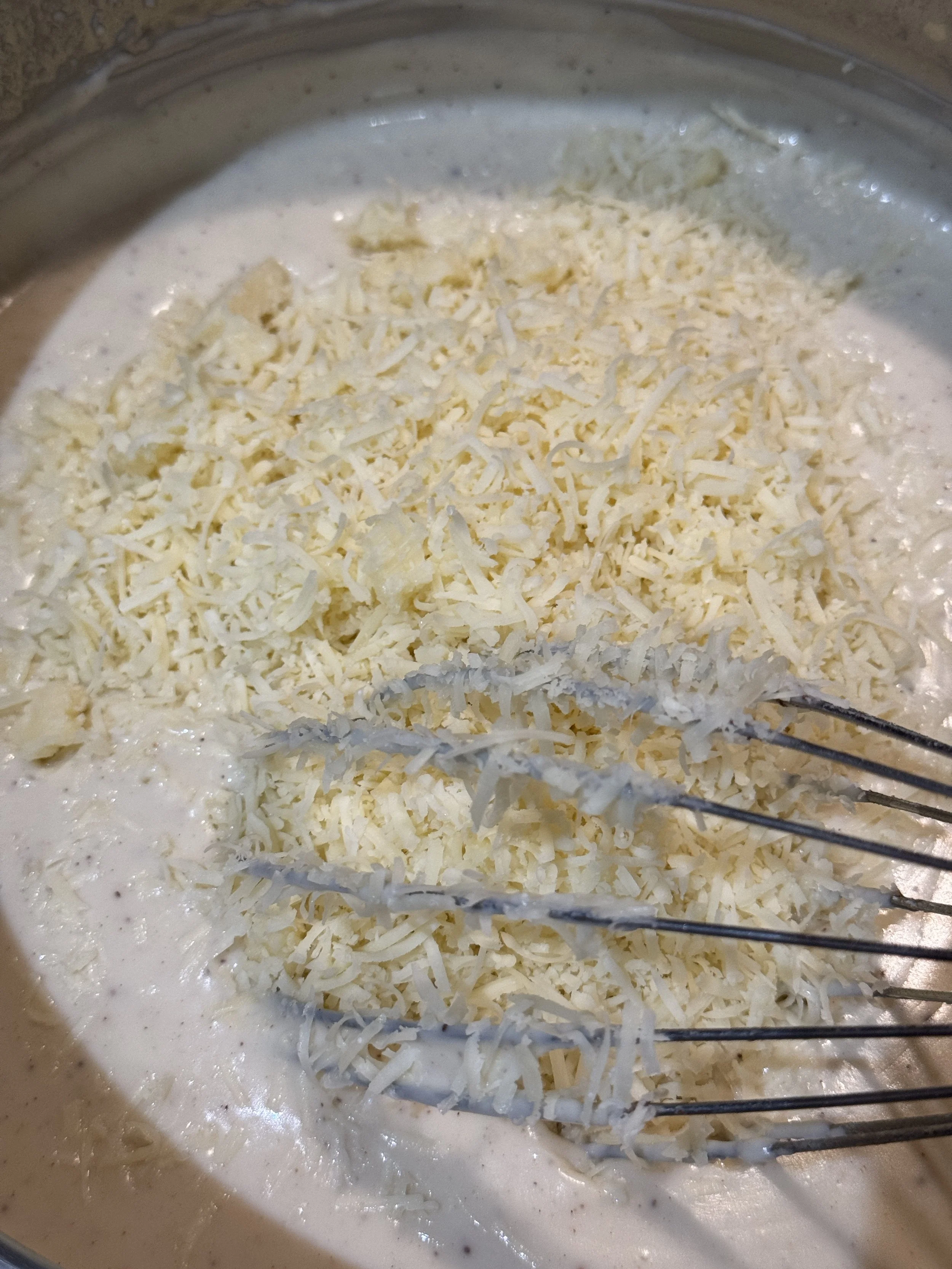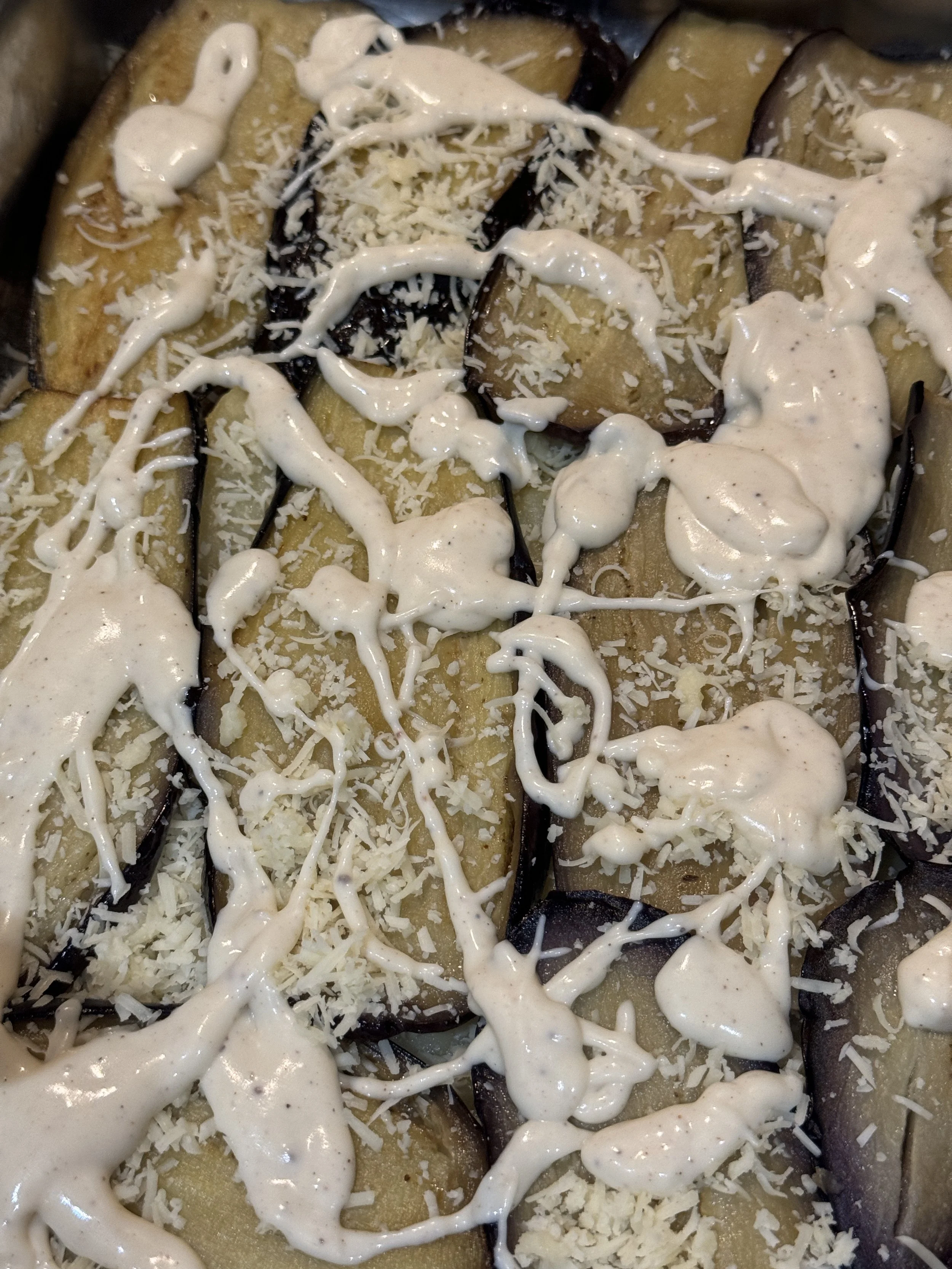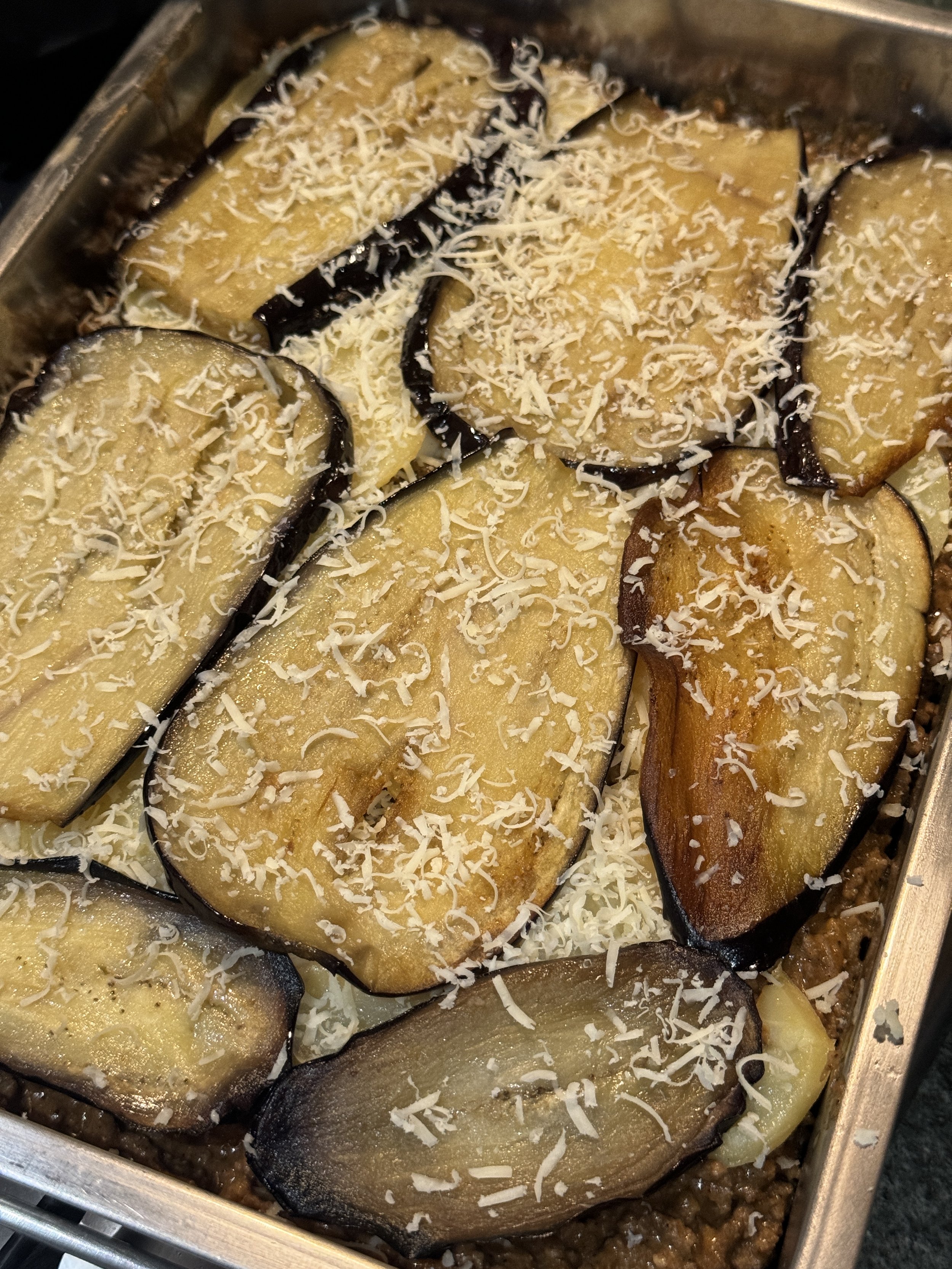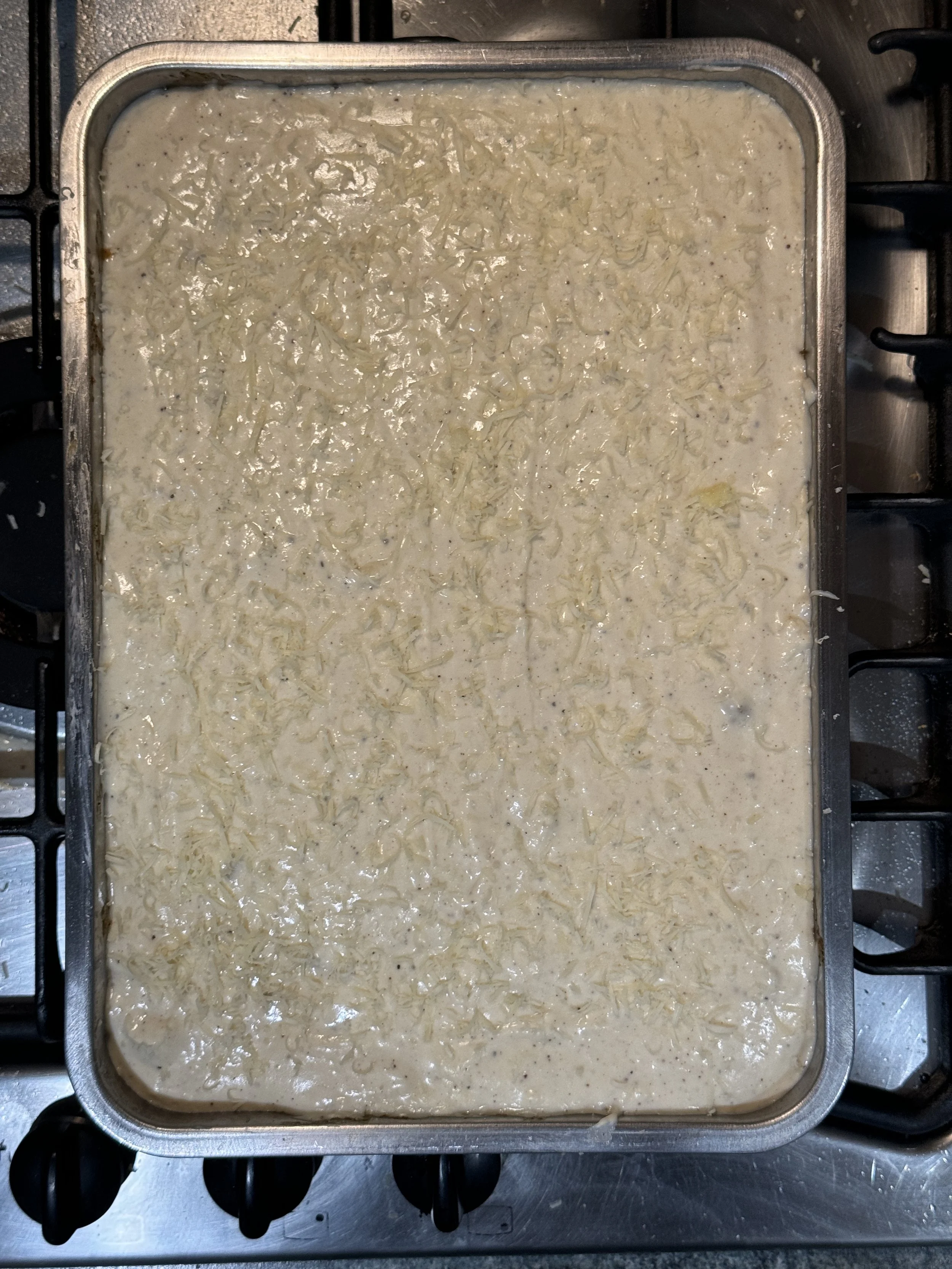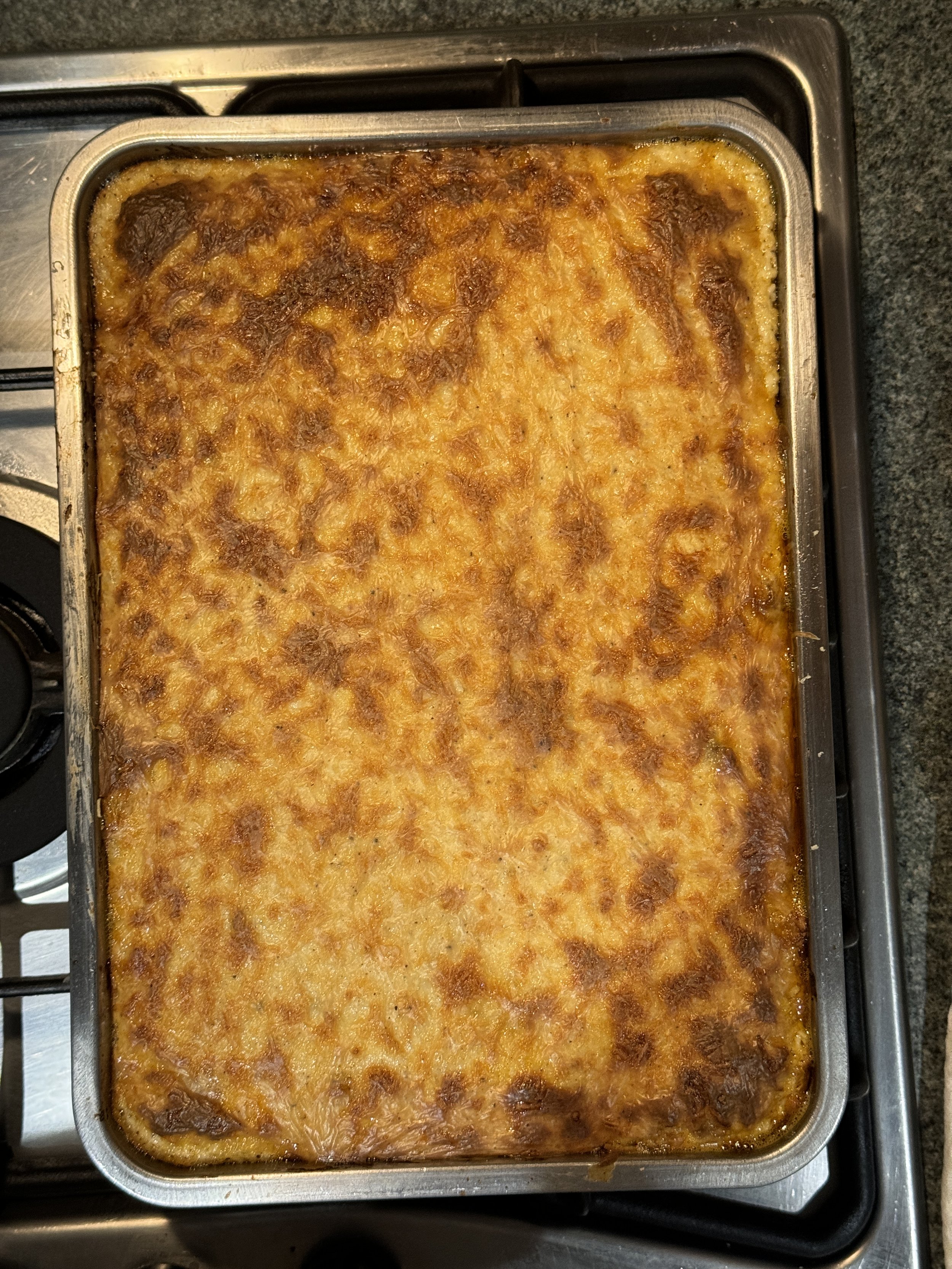Traditional Greek Mousakas Recipe
Mousakas history: is mousakas Greek?
Mousakas (mousaka in the accusative) is a Greek dish that evolved from a medieval Arabic dish consisting of minced meat and vegetables, called ‘maghmuma’ or ‘muqatta’a’. In the early 20th Century, a Greek chef called Nikolaos Tselementes adapted it by adding the bechamel sauce and thus conceiving of the dish called mousakas that has become a cornerstone of modern Greek cuisine.
Mousakas then, as we all know it, is a modern Greek culinary invention with a rich history that stems beyond Greece’s borders, and it’s therefore no surprise that recipes vary. Although there is no one way to make mousaka – with the vegetables and type of minced meat varying – this recipe strives for the most authentic and traditional average, i.e. the most universal, recognisable form of modern Greek mousaka that stems from Tselementes’ 20th Century invention.
Souvlakination mousakas with courgettes too.
Which meat and vegetables should you use to make mousaka?
Lamb or beef tend to be the most traditional choices of minced meat for modern Greek mousaka, although the use of minced pork is particularly popular among Cypriots, who will also use halloumi in the bechamel. Naturally, people will always use cheese that’s local and available to them, but my recommendation is graviera or kefalotyri. Some recommend pecorino as an alternative, which, although adds a nice saltiness to the base and bechamel, doesn’t work for the topping as well as a good Greek hard cheese.
Aubergine and potatoes are the most popular vegetables in mousaka (and tomatoes if you count that, which some people add slices of too). Many will also add courgettes (as does Tselementes) and some people will omit the potatoes, although doing the latter is not common. If you want to add courgettes to this recipe, substitute 2-3 regular courgettes for a potato and an aubergine and add the courgettes as the second layer.
Of course, there are also vegetarian or (vegan) fasting options, and the recipe enjoyed by Greeks in Constantinople before Tselementes added the bechamel is closer to the version inherited from the Arabs in the Ottoman Empire: layers of aubergine, minced meat, onions, and tomato.
Here’s the most universally basic and traditional form of mousaka that has stemmed from Tselementes’ recipes, with some adaptations for how to make it taste amazing. And don’t worry, it doesn’t come out oily at all.
Authentic Mousakas Recipe: How to make Traditional Greek Mousaka
Mousakas is just as good the day after – when it’s arguably even tastier.
Ingredients for mousaka:
For the base:
250g extra virgin olive oil
2-3 large aubergines
3-4 large potatoes
75g graviera cheese (or kefalotyri)
Breadcrumbs
For the minced meat:
900g minced beef or lamb, 20% fat (or pork as Cypriots tend to use)
1 heaped tbsp tomato puree
5 large tomatoes, grated
1 large onion finely chopped or grated
2 cloves of garlic
2 bay leaves
2 tsp ground cinnamon
1 tsp ground nutmeg
½ tsp all spice
1 small glass (125ml) of red Mavrodaphne, Commandaria or 100ml of cognac
For the bechamel sauce:
150g organic butter or extra virgin olive oil
2 pints (1.1365 litre bottle) organic whole milk
100g plain flour
½ tsp nutmeg
1 tsp cinnamon
2 egg yolks
75g graviera cheese, and 50g extra for the topping
Method: how to make authentic Greek mousaka
Preparing the mousaka base:
Add the extra virgin olive oil to a deep frying pan and put on a medium to medium-low heat to shallow fry the veg.
Peel the potatoes, trim the stalks off the aubergines and slice them all into 0.5cm–1cm thick slices
To check if the oil is to temperature, dip a small cube of bread or a wooden skewer to the oil, and you should see it gently bubble around the edges – if it’s too vigorous turn the heat down and let the temperature come down a little before adding the veg.
Slowly shallow fry the potato and aubergine slices (in batches to avoid them overlapping and sticking) until soft but not breaking apart, turning once or twice and being careful not to brown them too much. This should take around 15 minutes for the potatoes and 20 minutes for the aubergine. The goal is to soften them patiently to achieve a sweetness and golden colour, rather than a brown, caramelised crust. (If the oil is too hot you’ll brown the veg quickly without getting that sweetness and softness all around.)
When the slices are soft and golden, drain with a slotted spoon or tongs and place on a wire rack or kitchen paper to drain any excess oil. Lightly season with seat salt.
Set aside and take the oil off the heat. If it’s your first time frying with this olive oil you can reuse it a couple of times more.
Making the minced meat for mousaka:
Add 3 tbsps of extra virgin olive oil to a large saucepan on a medium-high heat.
Add in the minced meat bit by bit and season with some salt. Cook the minced meat until it’s coloured, stirring and breaking up as you go, and then turn down to a medium heat.
Add the large grated onion and fry on for 5-10 minutes (or until translucent if you’ve chopped it).
Crush or finely chop in the garlic and gently cook for 2-3 minutes, then add the spices and fry for a couple more minutes.
Add your wine and cook away the alcohol for 1-2 minutes. (Seasoning and adding the spices before you deglaze with alcohol helps enhance the flavour.)
Stir in the tomato paste thoroughly then add the bay leaves and the grated tomatoes and stir well.
Gently simmer for 15-20 minutes until the liquid has mostly reduced, stirring regularly. Season to taste, remove from the heat and set aside.
Pre-heat your oven to 170 degrees celsius (fan) when you’re ready to make the bechamel and cook the mousaka.
How to make bechamel sauce for mousaka:
First, heat the milk separately in a saucepan on a medium heat. Add in a couple of whole cloves and a small cinnamon stick and bring to the boil, then remove from the heat.
Place another saucepan on a medium heat and melt the butter. Sieve in the flour and whisk together with the butter to make a roux – i.e. until it thickens into a smooth paste.
Remove the cloves and cinnamon from the milk and gradually whisk it into the roux, one ladle at a time to prevent clumps forming, and whisking continuously to stop it catching at the bottom.
Remove from the heat. Grate in the nutmeg then whisk in the egg yolks and the 75g of cheese.
How to assemble the mousaka:
In a baking dish approximately 30cm in length, sprinkle breadcrumbs all over the base to soak up any excess olive oil and prevent the bottom layer from sticking.
Layer the potato slices, slightly overlapping, until you have covered the base. Very lightly season to your liking. (If the potatoes are too soft and crumbling apart, start with the aubergines instead.)
Lightly cover all over with some of the grated cheese and repeat with the aubergines.
Now add a ladle of the bechamel to the minced meat and stir it in.
Spoon in half of the minced meat mixture over the potatoes and aubergines, and drizzle over 4-5 tbsps of the bechamel. This helps to fuse the mousaka together and keeps the flavours running throughout.
Cover with more grated cheese and repeat the process with another layer of potatoes and aubergine, again using up the rest of the grated cheese you have reserved for the base.
Add in the rest of the minced meat, cover with any excess slices of veg, and pour over the remainder of the bechamel.
Gentle spoon across the surface to evenly distribute the bechamel and make sure all of the mousakas is coated, then tap the bottom of the baking dish against your kitchen worktop a couple of times to help even the bechamel out.
Lightly cover all over with some grated graviera and cook on 170 degrees celsius for 50 minutes or until evenly golden brown on top.
Allow to cool undisturbed and uncovered for 45 minutes before slicing and serving. Mousakas is just as good served at room temperature a few hours later, or even the next day when it’s sturdier and arguably tastier.





